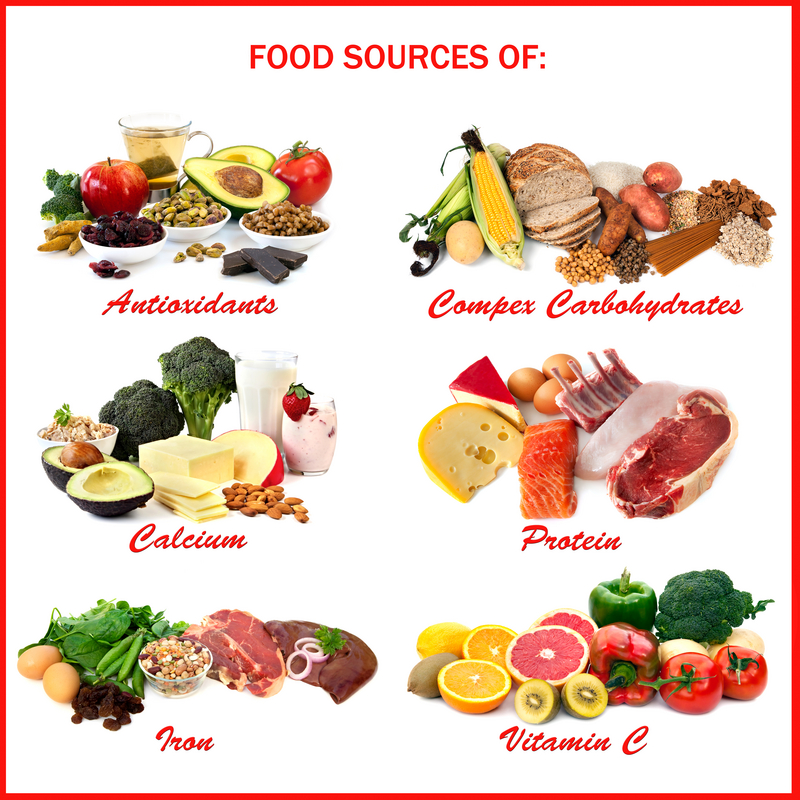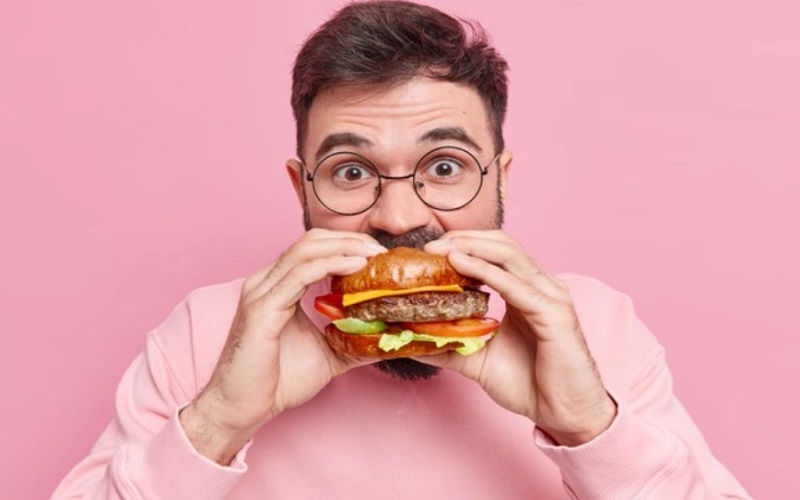
The Whole30 diet is a way to reset your metabolism and cleanse your digestive tract. You can't consume junk food or buy store-bought items. And you will need to avoid soy and dairy. However, you can still eat plenty vegetables and fruits which can be an excellent alternative to fast food. This list includes healthy snack and meal recipes. You can make these delicious and nutritious treats without sacrificing the flavor of the foods you love.
You can eat a variety of fruits and vegetables as part of the Whole30 diet. The Whole30 doesn't mean you have to eliminate them all, but there are some you should avoid. The Whole30 website lists the allowed and banned foods. You can also download the free chart.
Although you cannot eat packaged foods, you can find them in stores that sell them. They are not included in the Whole30 food list, even though they technically meet the requirements. Instead, it focuses on eating more natural and unprocessed foods - such as fruit, nuts, and seeds. You will still be able to eat more vegetables than ever but not as much processed meat.

You can eat 30 whole vegetables a day. Because vegetables are richer in nutrients, fiber, and other nutrients, they are more nutritious. While Whole30 doesn't allow you to eat cowboys ribeyes for 30 consecutive days, vegetables are an excellent source of fiber as well as minerals. Fruits contain a lot of natural sugar, so it's important to not make fruit a regular part of your daily diet. Many people don't realize they are eating too much sugar.
A whole30 diet will allow for you to eat vegetables but not potatoes. You will be able to eat all fruits and vegetables, but not too much processed or red meat. They can cause bloating. These items may need to be purchased at a grocery store that stocks them.
Other Whole30 friendly foods include fish and eggs. You can add them to stir-fries and salads, but you will need to be very careful not to eat too much of them. If you choose the right foods, you can still enjoy them in moderation. You can still eat almond butter and carrots, even though you might not be able chocolate. You can also use almond butter or vegetable juice in moderation.
While Whole30 may not be for everyone, it is a great way of detoxifying your body and losing weight. It's also a great way to start eating better and feel better. It's important to be familiar with the basics of the program if you are new to it. If you're not sure which foods to include, you should try to eat them as often as possible.

You can also try frying bananas or plantains in coconut oil, which are both allowed on the Whole30 list of foods. Coconut oil can be used for both bananas or plantains. But you should not over-ripen them. Avocados are an excellent addition to the Whole30 diet. They can be used to curb your cravings. The Whole30 diet is best to be consistent for a few months to reap the benefits.
The Whole30 Diet is a good way to break bad eating habits. You can avoid sugar and processed food. You can make your body feel great by eating real, whole foods that aren't processed. It doesn't require you to count calories, measure portions, or weigh yourself. Whole30 is possible without having to follow any of these traditional lifestyles. It is important to ensure you don't experience any side effects during the Whole30.
FAQ
How long should I do Intermittent fasting to lose weight?
It is not as easy as you think. It is important to take into account a number of factors when deciding the optimal days for fat loss. These are:
-
Your age. Your age. Intermittent fasting is more difficult for younger people under 40. You have less time to recover each day from fasting. On the other hand, if you're older (over 60), you may find that you don't have enough energy to sustain an extended period of daily fasting.
-
Your current body composition. Longer periods of fasting are more beneficial if you have a lot muscle mass. You may find shorter fasting more beneficial if your muscle mass is low.
-
How physically active. Regular exercise may mean that your fasting window needs to be extended to allow you to get sufficient rest between sessions.
-
Your past medical history. Some people with medical conditions like diabetes, heart disease, cancer, etc., may require additional fasting monitoring.
-
How do you handle stress? Stressful situations often cause us to eat more. To avoid this, you might want to increase the lengths of your fasting window.
-
Which type of diet you choose. Certain diets, like ketogenic diets, may require even longer fasting periods.
-
Your sleep quality. A decreased quality of sleep can also be linked to decreased appetite and metabolism. It could take some experimentation to discover the best method for you.
-
How much protein you eat. The ability to stabilize blood sugar levels. Eating more protein can lead to lower insulin levels. This would allow for you to fast more often.
-
People who want to gain weight or lose it will need to fast for longer periods of time than those trying to lose.
-
How many calories did you consume during your fasting period? Fasting for fewer calories per days may lead to greater fat loss than fasting with more calories.
-
Your overall fitness level. The metabolic rate of fast people who are fit is higher, which means they burn more calories each day.
-
Your gender. Men have greater appetites than women and may need to fast longer. Women generally have smaller appetites, so they may only need to fast for about 20-30 minutes every morning.
-
Your lifestyle. Are you someone who gets plenty of physical activity? Do you work out several times a week? Is your job a long, sedentary one? These factors could affect how much you should fast.
-
How much money do your spend on food every day? It doesn't always mean that you should spend a lot of money on groceries if you eat healthy foods. It's possible to save money by purchasing whole grains rather than white bread, fruit instead of candy bars, lean meats instead fatty cuts, and fruits instead of candy.
-
It is vital that you control your hunger. You may not have to fast as often if it is important to eat regularly.
How to Create an Exercise Routine?
It is important to establish a routine. It is important to plan what you will do each morning and how much time you will be doing it. This helps you plan ahead and avoid procrastination.
A second important thing to do is ensure you have lots of variety when it comes to your exercise routine. It is important not to get bored while exercising. This will cause you to lose interest and make it difficult for you to stick with it.
You also need to keep track of your progress. It's crucial to track your weight changes over time.
If you lose weight and then gain more weight, it is easy to lose your motivation. It's harder to stay motivated if you gain too many pounds.
It is important to find the right balance between weight gain or weight loss. If you are unhappy with your current situation, you will be less inclined to exercise.
What is the best exercise for busy individuals?
The best way to stay fit is by doing exercises at home. It is not necessary to go to the gym or join any fitness club. It is possible to perform basic exercises at home with minimal equipment.
You will need a pair, mat, chair, timer, and some dumbbells.
The most important thing is ensuring you are consistent with your workouts. If you miss a few days, then you may lose all motivation.
A great way to start off would be to try lifting weights three times per week. You could do push-ups and pull-ups as well as squats, lunges or push-ups.
Once you are proficient in these movements, you will be able to do other types of exercise, such as running, jumping, skipping and yoga, pilates, dancing, swimming, weight training and tennis.
You should choose an exercise program that suits your life. Exercises that take too much energy, for example, might not be a good fit for someone who works long hours.
If you're a night-owl, you might consider working out in the evenings rather than in early morning.
Pay attention to your body. Don't be afraid to stop when you get tired.
What is the best exercise for weight loss?
There are many factors that impact the amount you exercise to lose weight. However, the majority of people require at least 30 minutes of moderate exercise five days a week.
The American College of Sports Medicine recommends 150 minute of moderate-intensity aerobic activities per week. These should be done over three days.
You can lose 10 pounds by doing 300 minutes of moderate-intensity exercises each week, for example. This includes activities like jogging or running, swimming laps and biking.
For those just starting out, you might consider 20 minutes of vigorous activity every other week. It could be sprinting, lifting weights, jumping rope or fast walking.
Aerobic exercise also helps burn calories and build muscle mass. Muscles burn more calories than fat. Building muscle and losing weight could help you get there faster.
Statistics
- It's estimated that half of all American adults attempt to lose weight every year (1Trusted (healthline.com)
- A 12-week study in 20 women with obesity found that walking for 50–70 minutes 3 times per week reduced body fat and waist circumference by an average of 1.5% and 1.1 inches (2.8 cm), respectively (healthline.com)
- Another study found that 24 weeks of weight training led to a 9% increase in metabolic rate among men, which equated to burning approximately 140 more calories per day. (healthline.com)
- According to a study sponsored by the American Council on Exercise, a person weighing around 140 pounds (64 kg) would burn 108 calories at a 30-minute beginner's Pilates class or 168 calories at an advanced class of the same duration (26). (healthline.com)
External Links
How To
How to lose belly fat fast?
You should know that losing bellyfat is difficult. It takes dedication, hard work, and dedication. But if you follow these tips, you will definitely see results.
-
Healthy Food It is vital to eat healthy food. It is important to eat healthy foods such as fruits, vegetables and whole grains.
-
Drink Water. Drinking water will keep you hydrated and make it easier to feel satisfied for longer durations. Get plenty of water every single day.
-
Do Cardio Exercises. Cardio exercises will help you burn calories and build muscle. They can improve your heart health as well as increase metabolism. Do 30 minutes of cardio exercise each day.
-
Get enough rest. Good health is dependent on sleep. Insufficient sleep can cause anxiety and stress which can lead to unhealthy eating habits such as smoking and excessive drinking.
-
Reduce stress levels. Stress can cause changes in brain chemistry and hormonal levels. Stress causes cortisol to be released by the body, which is a hormone that can increase hunger pangs, and cause cravings for high calorie foods.
-
Take Regular Breaks. Take regular breaks throughout the day. Go outside and walk around or take a short nap. This gives your body and mind time to relax.
-
Avoid Alcohol Consumption. Alcohol has empty calories, and can slow down digestion. Drinking alcohol is not a good option if you want to lose weight.
-
Have fun!